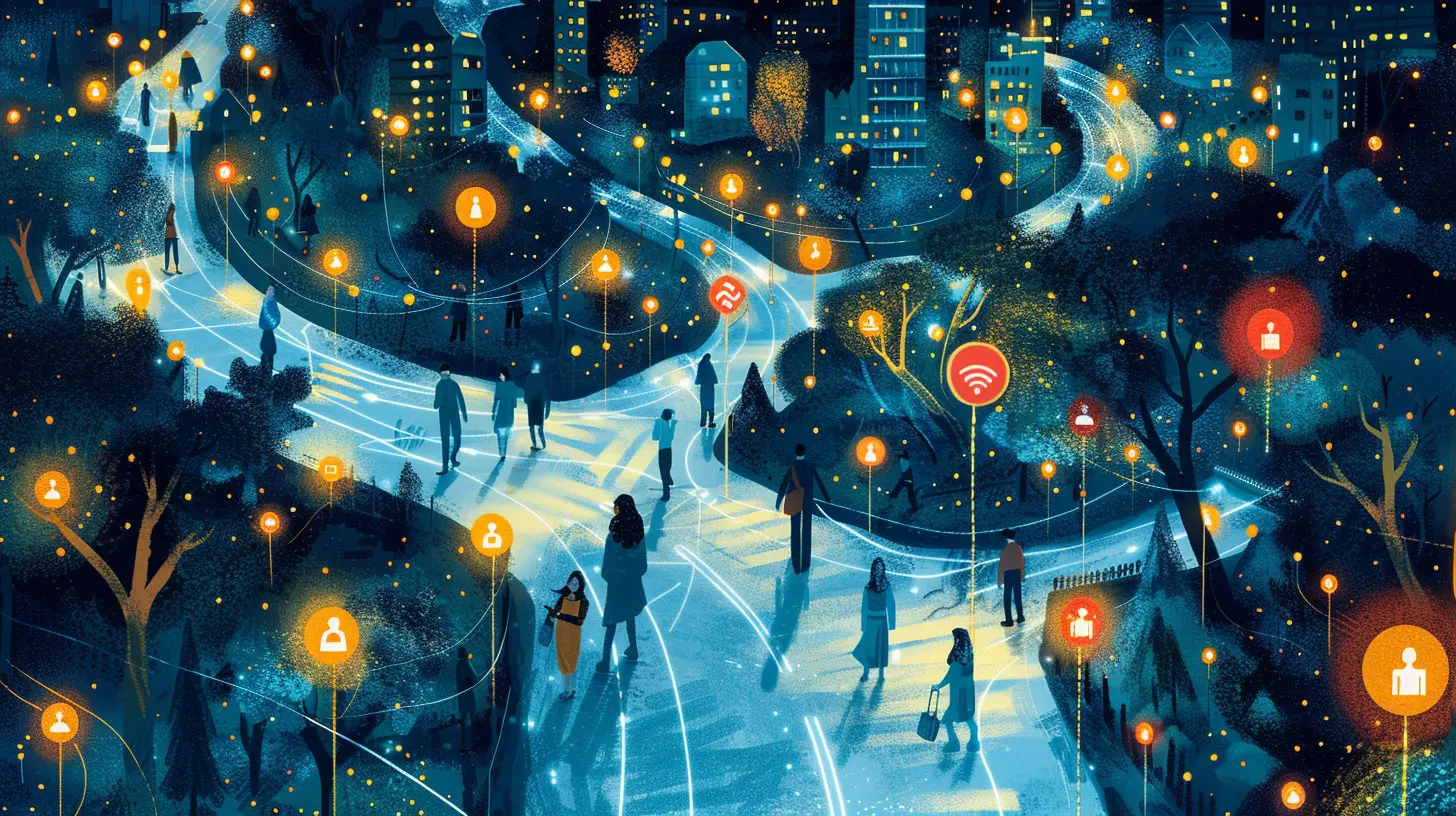23 April 2025
Social anxiety is no joke. It’s that gnawing fear of judgment, the over-analysis of every word you say, and the constant worry that you’re being scrutinized. Now, throw social media and instant communication into the mix, and boom—you’ve got a recipe for an anxiety storm.
If you’ve ever felt overwhelmed by social interactions, both online and offline, you’re not alone. Our hyper-connected world can feel like a minefield for those suffering from social anxiety. But don’t worry—we’re breaking it all down, and by the end of this, you’ll have a few tricks up your sleeve to navigate it like a pro. 
What is Social Anxiety, Really?
Social anxiety isn’t just about shyness. It’s a deep-rooted fear of being negatively judged, embarrassed, or rejected in social situations. Some people feel this anxiety in everyday interactions—ordering coffee, making small talk, or even sending a text. Others experience it more intensely, avoiding social situations altogether.The modern world has made things even trickier. We’re expected to be on all the time—posting, replying, engaging—but for someone with social anxiety, that constant connectivity can feel suffocating. 
Why Is Social Anxiety Worse in a Hyper-Connected World?
1. Social Media: A Double-Edged Sword
We love to hate it, but let’s be real: social media is a breeding ground for comparison and self-doubt. When you scroll through perfectly curated lives, it’s easy to feel like you’re not measuring up.Even worse? The pressure to respond instantly. Someone sends a message, and boom—you feel like you have to reply right now or they’ll think you’re rude. And if you don’t get a response? Cue the overthinking.
2. Texting and Online Messaging Anxiety
Ever stared at your screen, re-reading a text 20 times before sending it? Or worse—typed something out, deleted it, typed it again, then chickened out altogether? Yeah, same.Communicating digitally should make things easier, but for someone with social anxiety, it creates more room for misinterpretations. Did they read my message? Why haven’t they responded? Did I say something wrong? Suddenly, a simple chat turns into an anxiety spiral.
3. The Fear of Video Calls
Video calls bring a whole new level of anxiety. Not only do you have to worry about what you’re saying, but you also have to focus on how you look, what your background is, and whether your internet will betray you mid-sentence. With remote work and virtual hangouts becoming the norm, avoiding face-to-face interactions is nearly impossible.
Breaking the Cycle: How to Navigate Social Anxiety in a Digital Age
1. Reframe Your Mindset
Social anxiety convinces you that people are judging your every move. Spoiler alert: they’re not. Most people are too caught up in their own lives to be dissecting yours. Challenge those negative thoughts. Instead of thinking, “They probably think I’m weird,” reframe it as, “They’re probably not even thinking about me at all.”2. Limit Your Social Media Consumption
Let’s be real—doomscrolling isn’t doing you any favors. If social media triggers your anxiety, set time limits. Unfollow accounts that make you feel insecure. And most importantly, remind yourself that what you see online is a highlight reel, not reality.3. Practice “Safe” Social Interactions
Start small. Engage in low-pressure digital interactions, like commenting on a post or replying to a story. Over time, these small steps will help build confidence.4. Stop Overanalyzing Messages
Not every text needs to be composed like a Shakespearean sonnet. Send the message and move on. If someone takes a while to respond, don’t assume the worst—they’re probably just busy.5. Set Boundaries with Digital Communication
You don’t have to respond instantly. It’s okay to mute notifications, turn on “Do Not Disturb,” and take breaks. Your mental health is more important than being available 24/7.6. Get Comfortable with Face-to-Face (Even Virtually)
Video calls might be nerve-wracking, but practice makes perfect. Start with low-stakes situations—a quick check-in with a friend or colleague—before diving into larger meetings or group calls.7. Challenge Avoidance Behavior
Avoidance only feeds anxiety. The more you dodge social interactions, the scarier they become. Push yourself to engage in manageable interactions instead of retreating all the time.8. Practice Self-Compassion
Social anxiety is tough, but beating yourself up over it doesn’t help. Treat yourself with kindness, the way you would a friend. If you have an awkward moment, laugh it off—everyone has them.
When to Seek Professional Help
If social anxiety is interfering with your daily life—making work, relationships, or basic interactions unbearable—it might be time to seek help. Therapy (especially cognitive-behavioral therapy) can be life-changing. And in some cases, medication can provide extra support.There’s no shame in needing help. Mental health is just as important as physical health, and getting support is a sign of strength, not weakness.
Final Thoughts
Living in a hyper-connected world while dealing with social anxiety can feel like running a marathon with weights on your feet. But you don’t have to let it control you. By setting boundaries, challenging negative thoughts, and taking small steps, you can learn to navigate social interactions—both online and offline—without drowning in anxiety.Social anxiety doesn’t define you. You are more than your fears, more than your overthinking, more than your worries. And you’re not alone in this.
So the next time your heart races over a message notification, remember this: you’ve got this.




Denise Rogers
This article offers valuable insights on managing social anxiety. Embracing small, consistent steps and utilizing digital tools can truly help foster connections in today’s world.
April 25, 2025 at 2:30 AM